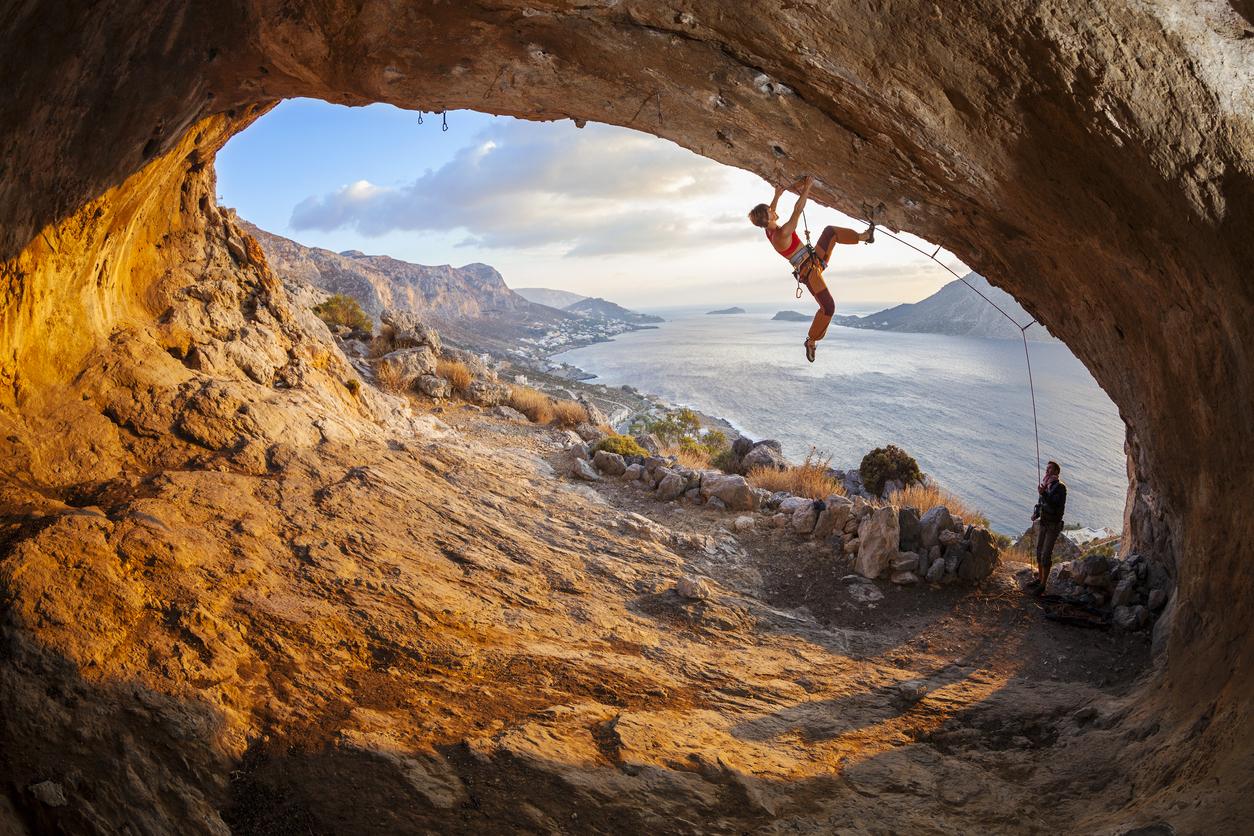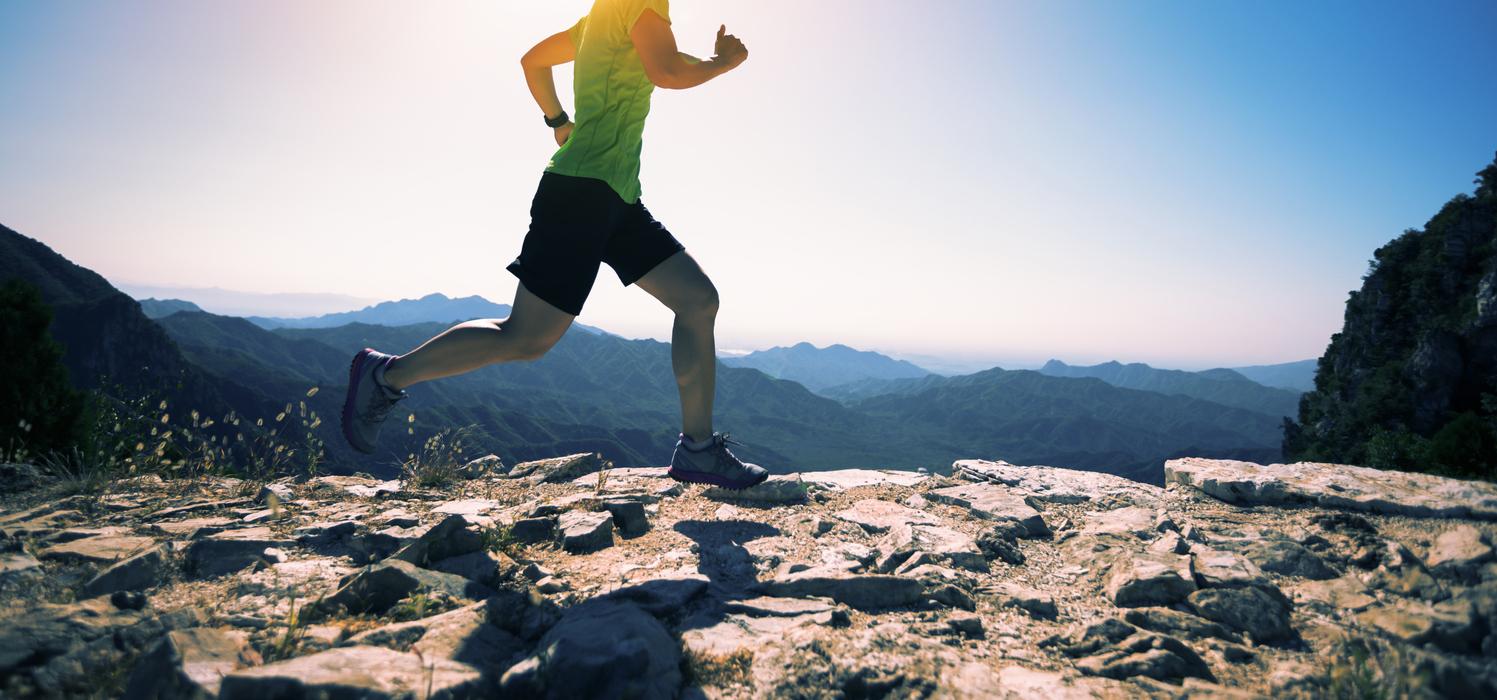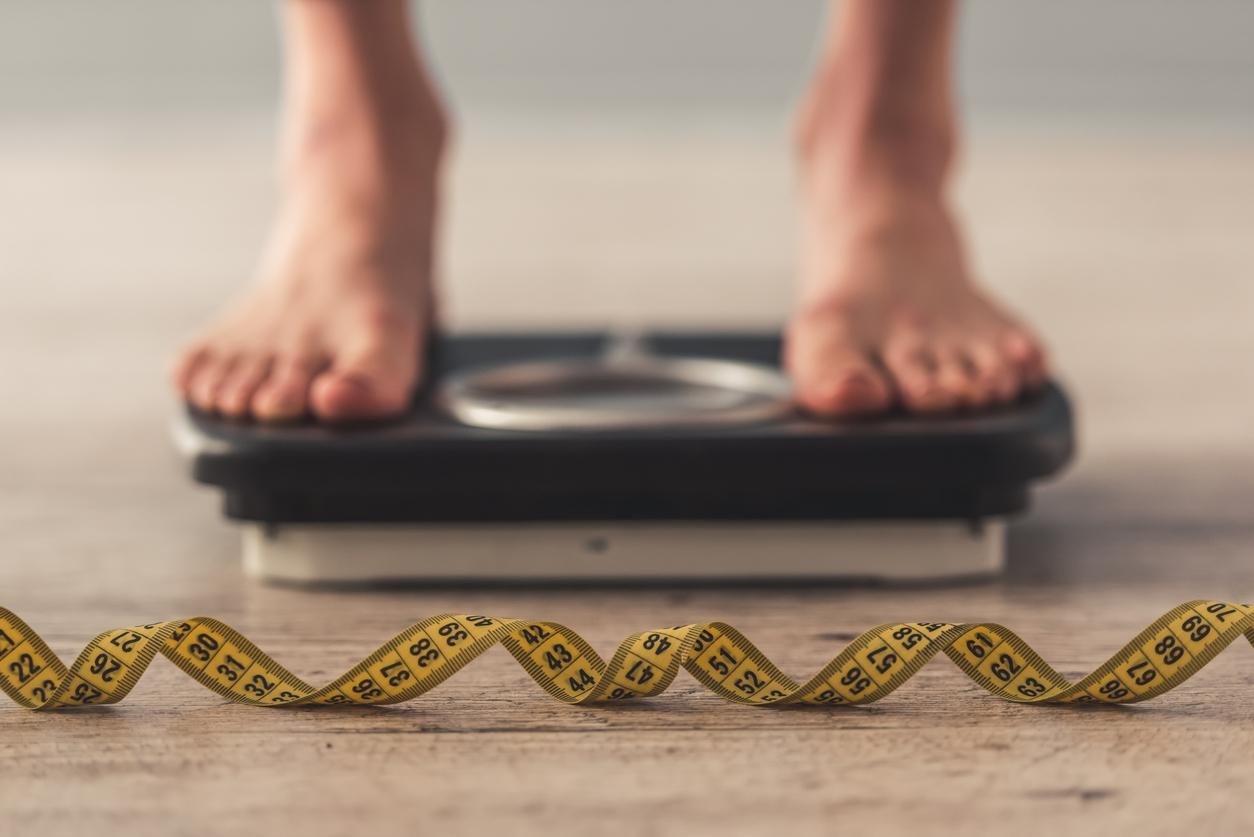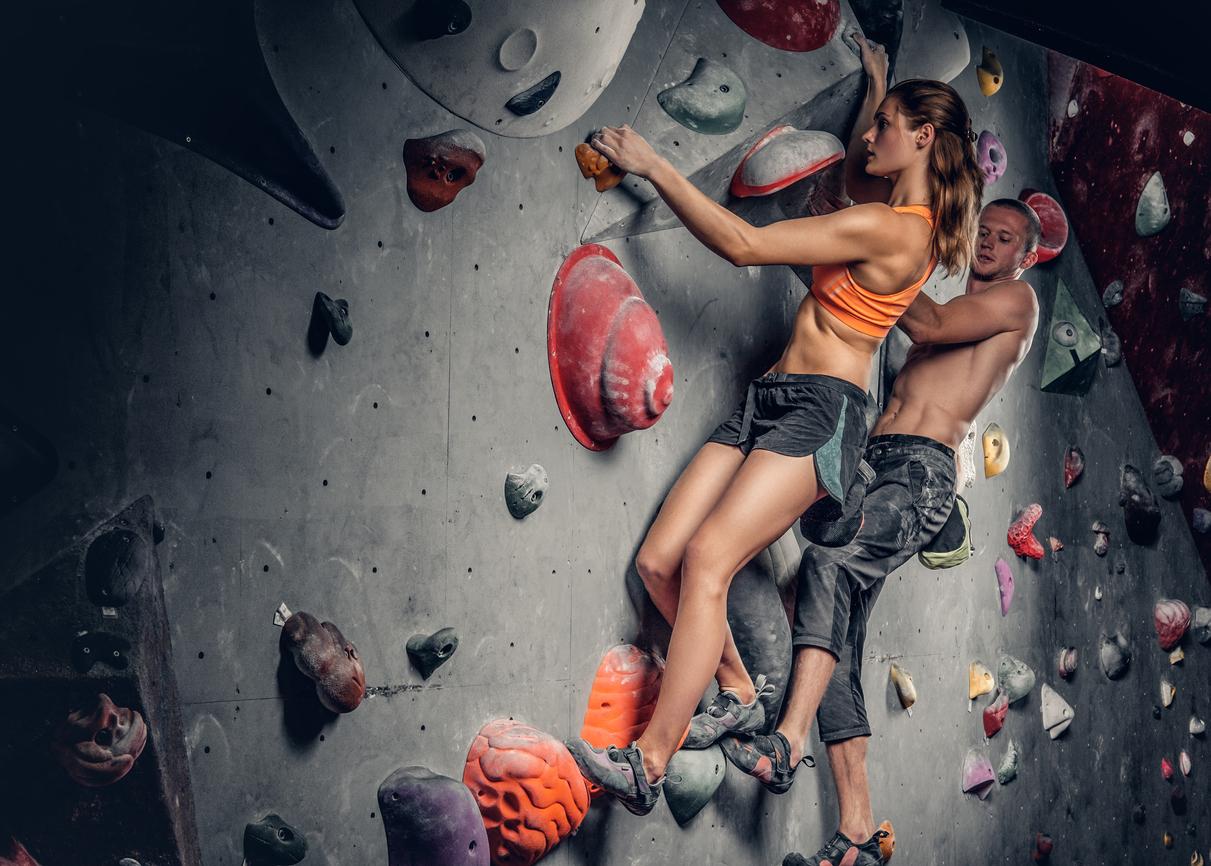From a distance or if you’re watching the pros who make it look easy, rock climbing might appear to be a low-intensity sport.
You just walk up to the wall, grab a hold, and climb up, right? No biggie.
Rock climbing is not only a stellar workout for your physical body; it also engages your mind while you try to solve the puzzle of a route on the rock and triggers your emotions while you confront your fear on the wall. If you’re looking to pick up a sport that challenges your entire self and serves as both a cardio workout and a strength building exercise, then rock climbing may be just the thing you need.
If you’re just starting out, you may not realize how physically, mentally, and emotionally challenging the sport of rock climbing can be. But if you’re a seasoned pro, then you know that climbing is one of the best full body (and mind) workouts that you can do.
And it doesn’t matter whether you’re indoors at a climbing gym or enjoying the beautiful sunshine at your local crag; climbing is a good workout, period.
Body Systems Developed by Rock Climbing
Cardio
Not much of a runner? Struggle to climb hills on a bike with two wheels? Dread the monotony of the indoor treadmill?
Don’t fret; you can get your cardio in and have a blast at the same time with… you guessed it - rock climbing!
If you’re climbing outside, then the approach to the crag, which could range anywhere from a few steps to a couple of miles, often serves as a heart-pumping warm-up to your day of climbing.
Many approaches involve hiking up steep inclines or walking for miles on windy, rocky trails while carrying a heavy pack, which increases your heart rate and warms up your muscles.
Once you arrive at the wall, whether it’s after an on-foot approach to the crag or a drive to your local indoor gym, it’s recommended that you prepare your muscles with a few dynamic climbing specific warm-up stretches to prevent injury.
This period of warming up can serve as light cardio as it is designed to get your heart pumping blood to your cold muscles and prepare your cardiovascular system for the cardio-intensive climb to come.
When you tie into the sharp end of the rope (or clip the locking carabiner to your harness), you’re ready to begin scaling the wall and the real cardiovascular workout will begin.
A study done in 2004 at a university in Canada discovered that climbing is even more of an aerobic activity than originally predicted.
The dynamic, fast-paced movements involved in climbing a 30 - 80 foot vertical wall require your heart rate to increase in order to send enough blood to all your muscles that engage while you grip the holds and move on up the wall.
Plus, if you climb for more than an hour at a time with rests in between then you’re basically doing interval training, which is one of the most efficient ways to shed weight and feel great!
Agility
Climbing and bouldering (climbing short, intense “problems” without a rope) demand that you be quick on your feet and move with efficiency and grace, which means you need to be fit and agile in order to engage in the sport for any extended period of time.
You don’t have to start out with a high level of agility (or grace), of course.
Most people find the first time they climb, they’re worn out after only a few routes or an hour of trying to get up the wall and they need to take a break before getting back at it in a few days.
Once you overcome this beginners hump (which usually takes 3 - 6 months), you’ll find that your sense of balance and overall agility in daily life as well as on the wall have improved dramatically, all thanks to the uniquely complex physical movements required for proper climbing technique.
If you climb a few days a week for a couple of hours at a time, then you’ll be fit as a fox and agile as a chimpanzee in no time, scaling walls and overcoming obstacles that used to stump you with a newfound sense of confidence in your ability to move your body in ways you never thought possible.
Strength
In case it isn’t obvious when you think about the effort involved in hoisting your body straight up a vertical surface with little (read: no) support from gravity, rock climbing does, in fact, build strength.
This is part of what makes climbing such a fantastic total body workout - not only are you improving your aerobic capabilities and agility abilities, but you’re also engaging an impressive number of major muscle groups while you clamber up a steep cliff face.
The areas in your body where you’ll see the most improvement after a few months of consistent climbing are your core, your arms (especially forearms and biceps), and your back.
Your legs also get a good workout because, contrary to popular belief, climbers don’t actually pull themselves up the wall with sheer Hulk-like force.
Your arms are important to climbing, of course, but they are only part of the equation when it comes to making it to the top. If you want some inspiration and a reminder that climbing isn’t all about hand or arm strength, just look at Maureen Beck, who manages to climb 5.12 (a difficult intermediate grade) with only one and a half arms!
She, along with every other experienced climber, uses her legs intelligently to keep her hips in close to the wall, increasing her sense of balance and sculpting her quads and calves to be as hard as the rocks she chooses to climb.
How Does Rock Climbing Compare to Other Cardio Workouts?
If you’re new to the world of climbing, but you’ve been a gym rat for decades, you may be wondering whether rock climbing is a good replacement or supplement to your weekly gym workouts.
Many people who run regularly or cycle for fitness also find themselves in this dilemma, as climbing is definitely an aerobic exercise, although it may seem to be less like cardio and more like fun.
Many people wonder how you can be sure you’re getting a good workout when you’re having such a good time climbing up the wall?
Isn’t exercise supposed to be hard and make you feel like you really have to work for it?
That’s the thing about climbing, though - it’s a clever way to engage in cardiovascular activity and work on increasing your strength and flexibility while having the time of your life!
Running and cycling are without a doubt two of the most aerobically intense activities that a person can engage in - you’re sure to lose weight, build muscle (especially in the lower body), and improve your endurance if you run or bike a few times a week for an hour at a time.
a climber weighing approximately 160 lbs/72 kg climbing at an average level of intensity will burn between 8 - 10 calories/minute (up to 600 calories in an hour!)
But did you know that you can achieve the same results and increase your mental acuity and emotional stability through rock climbing?
When you’re climbing up the wall, whether inside or out, you’re working out your heart (increasing your cardiovascular health), your body (improving your strength in all areas of your body, not just the lower half), and your head (enhancing your mental clarity and balancing your emotional responses). Bet you can’t get all that and the social aspect of hanging out with fellow climbers on the ground through your daily running practice!
Of course, there is some benefit to pairing your climbing habit with gym workouts and other cardio fitness like running or swimming, but those other exercises are just extra fuel for the fire that will get you up the wall next time you decide to climb.
Will Rock Climbing Help Me Lose Weight?
Many people look to climbing as a fun and effective way to exercise with the goal to lose weight and improve their appearance. This isn’t a bad goal to have, but bear in mind that rock climbing is a sport that takes a certain level of investment before you’ll start to see physical results.
Because rock climbing is such an intense aerobic activity and it requires a healthy body weight to be a sustainable physical activity, if you dedicate yourself to the sport of climbing then you will undoubtedly begin to notice a significant shift in your body composition after climbing for a few months.
Aerobic exercises like rock climbing inevitably burn calories, which helps you to maintain a healthy body weight and enhances your ability to get up the wall, in turn increasing your sense of self-confidence and mental motivation.
A climber weighing approximately 160 lbs climbing at an average level of intensity will burn between 8 - 10 calories/minute (up to 600 calories in an hour!). And, the dynamic movements involved in climbing challenge the entire body, which is more fatiguing and effective at weight loss and muscle development than repetitive movements like running on a treadmill or cycling on a stationary bike in the gym.
So, if you’re looking to lose weight, increase your physical endurance, agility, flexibility, and strength, enhance your mental capacity, and overcome your natural fear of heights and falling in a fun and relaxed environment, then check out your local indoor climbing gym today!



